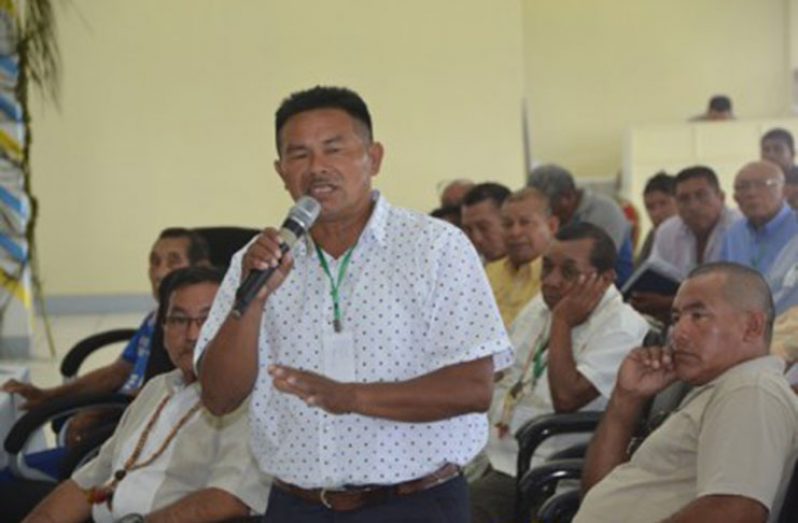INDIGENOUS leaders on Wednesday called on the Environmental Protection Agency (EPA) to increase its presence in hinterland communities.
The call came during deliberations on the third day of the week-long National Toshaos Council (NTC) conference, now on at the Cyril Potter College of Education (CPCE) at Turkeyen, where leaders spoke of the many issues affecting them in Marudi, Upper Mazaruni and Baramita.
In fact, the Toshaos and village leaders identified mining and the negative impact it has on the livelihood of the residents of those communities, as one of the major challenges with which they have to grapple.

Due to this, they have asked that the EPA have a heightened presence in their respective communities, and that they visit more often.
The NTC has also called for the EPA to establish offices at strategic points in all ten of the country’s administrative regions. Clyde Henry, Toshao of Waramadong, said villagers in the Upper Mazaruni are more concerned about the level of pollution in their waterways, as they heavily depend on them for their very survival.
“The Mazaruni River is fully contaminated… fishes refuse to live in the water, and your skin will break out when you use it,” Henry said.
“For years, we were very protective of our river, and we now realise the seriousness of this issue, especially the impact of mercury,” he added.
That said, he pleaded with the EPA to treat the Upper Mazaruni area with urgency.
In response, EPA’s Executive Director (ag.), Khemraj Parsram said that historically, the EPA, through an MoU, has delegated such responsibilities to the Environmental Management Unit of the Guyana Geology and Mines Commission (GGMC); that over the past year, the EPA has made efforts to improve its capacities.
He, however, assured Toshao Henry that the EPA will be establishing offices before the year is over at Lethem, in Region Nine, and in Region Six.
TAKE BACK CONTROL
“With that in mind, we are making the efforts to take back control of the environment with regards to mining and forestry, of course, in partnerships with GGMC,” Parsram said, “but we want to ensure that we play a stronger role going forward.”
He told Toshaos that over the years, the EPA has been responding to the complaints lodged by hinterland communities, where the negative impact mercury has been having on their livelihoods are concerned.
He said it is for that very reason that the Ministry of Natural Resources is currently collaborating with the United Nations Development Programme (UNDP) to develop a plan for the phasing out of the use of mercury altogether in mining.

Said he: “In the case of the Upper Mazaruni, in the past, we have made recommendations to the GGMC to take enforcement actions, because a lot of the issues are not clear-cut; there are the issues of miners’ rights and other legal authority, and the EPA does not have the authority to just go and say to a miner, ‘Look, you have to shut down!’ It is a process, and it takes time.”
He also noted that the EPA is in the process of identifying ‘hotspot’ areas for monitoring, and called on the hierarchy of the NTC to meet with the Agency to discuss the many issues affecting the Indigenous Peoples so that those concerns can be addressed.
On Monday, at the opening of the conference, President David Granger called on the nation’s Indigenous Peoples to work with his administration on reducing environmental hazards, particularly those related to water contamination and land degradation.
He said it is important that all communities be protected from hazards.


.jpg)











